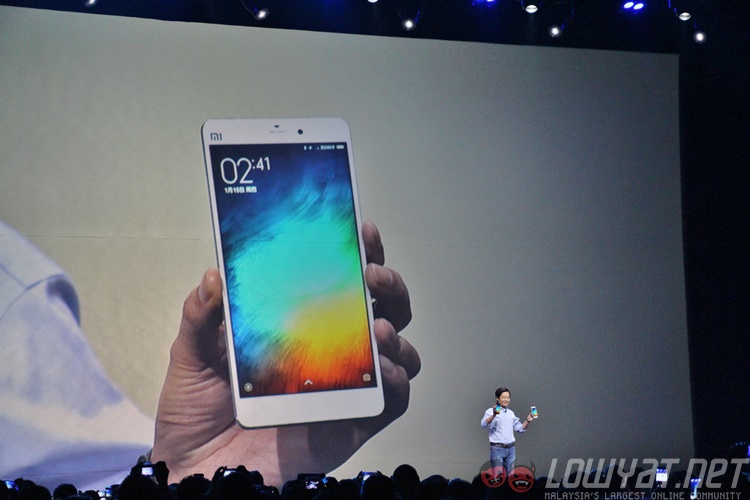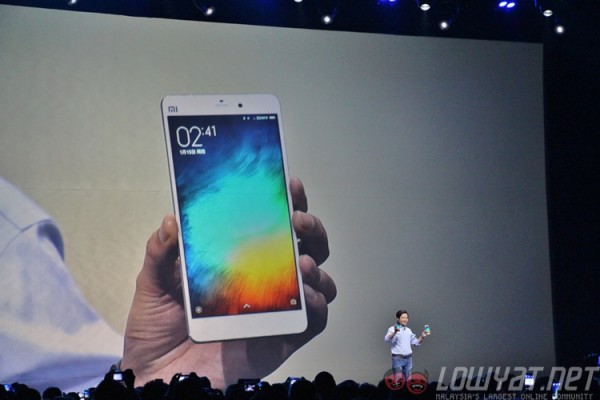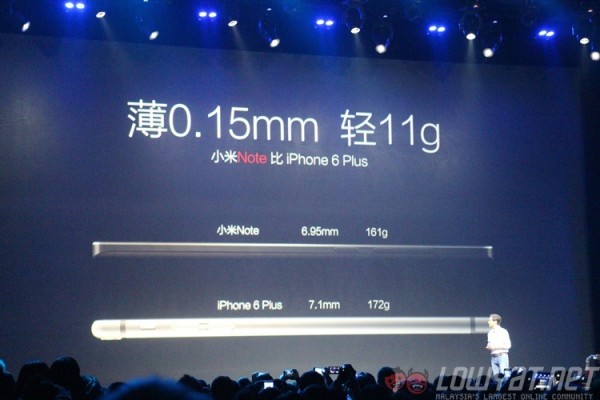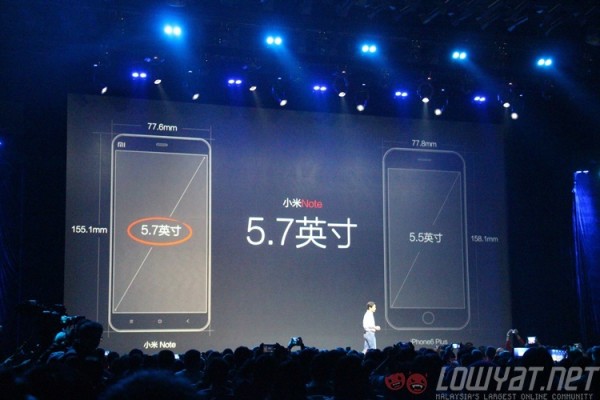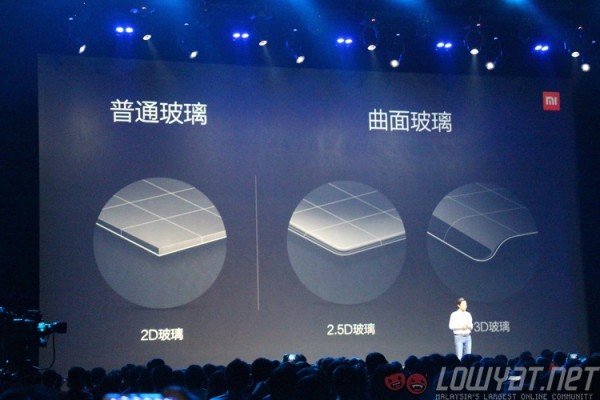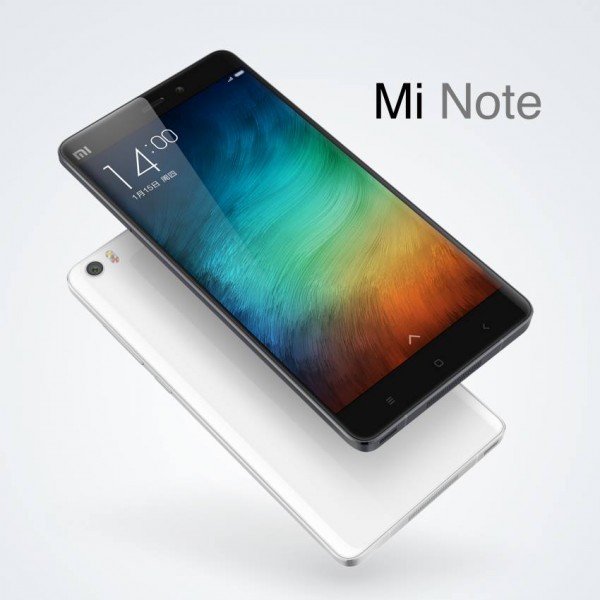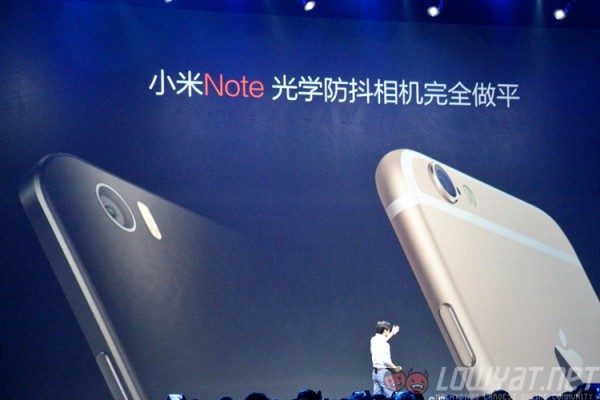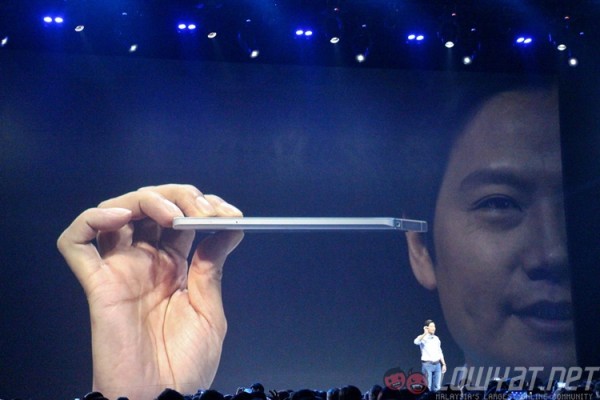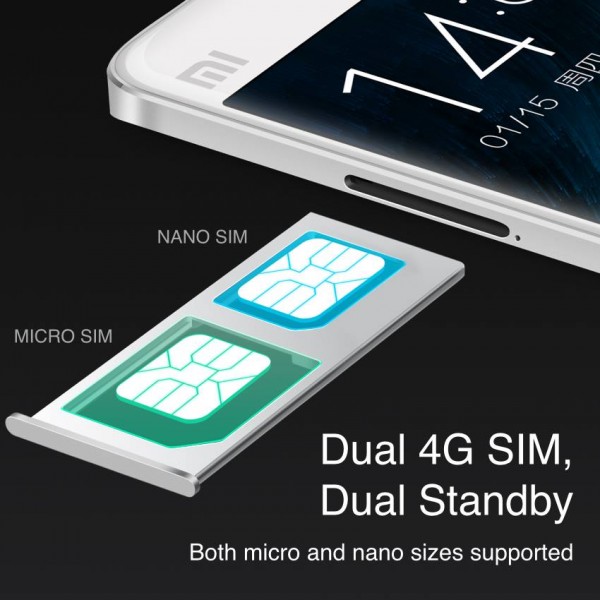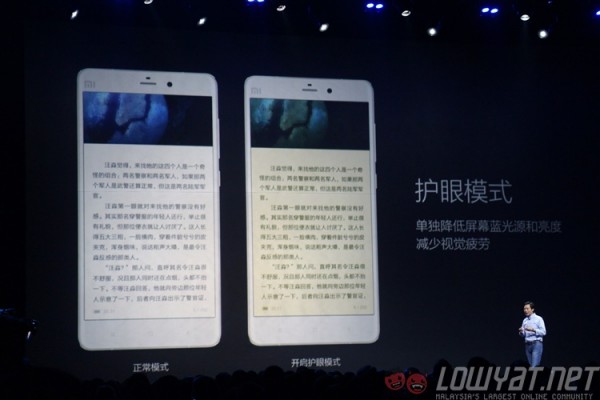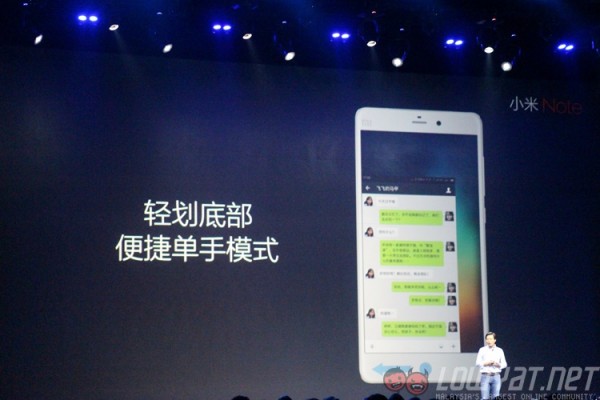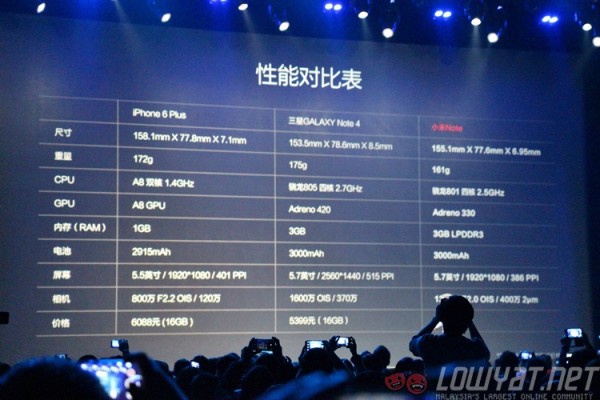As it turns out, Xiaomi’s latest smartphone isn’t a revolutionary new product, but the new Mi Note opens a new product category on its own. The Mi Note is the company’s first flagship phablet to complement the Mi 4 smartphone, and Xiaomi has set its aims very high – to take on the iPhone 6 Plus.
The Mi Note’s creation is aimed at just one thing: to produce the finest large-screen smartphone that dovetails the company’s own 5-inch Mi 4 smartphone. At 5.7 inches across, the Mi Note is a “no compromise” device.
To do this, CEO Lei Jun uses the iPhone 6 Plus as the company’s benchmark – improve on what it deems the best phablet in the world, and make it the best.
At 6.95mm thin and weighing 161g, the Mi Note is thinner and lighter than the iPhone 6 Plus. At the same time, the Mi Note also has a larger 5.7-inch screen. The display is a Full HD display by JDI, and Xiaomi claims that the Mi Note’s display has better colour reproduction compared to the Mi 4.
On top of that, the Mi Note features curved glass on both the front and back of the device. Like the iPhone 6 Plus as well as the Samsung Galaxy Note 4, the Mi Note sports a 2.5D curved glass on its display, while the back has a more pronounced 3D curved glass back, both made out of Gorilla Glass 3. The company also quelled any doubts about the Mi Note’s durability, showing a drop test from 150cm.
For the camera, Xiaomi uses a 13MP Sony Exmor rear camera sensor with a large f/2.0 aperture. In addition, the Mi Note’s rear camera also packs optical image stabilisation (OIS), without the unsightly bulge that its benchmark device has. The rear camera is also complemented by a dual-tone LED flash made by Phillips.
As for the front camera, it is a 4MP sensor with large 2-micron pixels, allowing for clearer low-light performance.
Powering the Mi Note is a Qualcomm Snapdragon 801 2.5GHz quad-core processor with an Adreno 330 GPU, paired with 3GB of RAM. There’s also a large 3,000mAh battery, and storage options are available in 16GB and 64GB variants. In addition, the Mi Note features an interesting nano- and micro-SIM dual-SIM card tray, and supports dual standby.
On top of that, the display also has a reading mode, which reduces the blue light emanating from the display, reducing eye fatigue when for users who are constantly reading on their smartphones.
Given the large display, the Mi Note also features a one-handed operation mode, where a swipe to the left or right on the navigational buttons at the bottom of the display will enable this feature. Users can not only shrink the display to the left or right of the screen, but also adjust the size of the smaller display to three different sizes.
Finally, the Mi Note also supports HiFi audio, featuring support for lossless audio playback on APE, FLAC, DSD and WAV formats. Complementing this feature is the new Mi Headphones, a 499 Yuan high-performance headphones.
The Mi Note will be available in China with both FDD LTE and TDD LTE support, and will be available in China later this month for 2,299 Yuan (about RM1,320) and 2,799 Yuan (about RM1,610) for the 16GB and 64GB variants respectively. A more powerful Mi Note Pro version, powered by the Qualcomm Snapdragon 810 chipset with 4GB of RAM as well as LTE Cat 9 support, will also be available at a later date for 3,299 Yuan (about RM1,900).
Stay tuned for our hands on of both the Mi Note and Mi Note Pro!
Follow us on Instagram, Facebook, Twitter or Telegram for more updates and breaking news.

